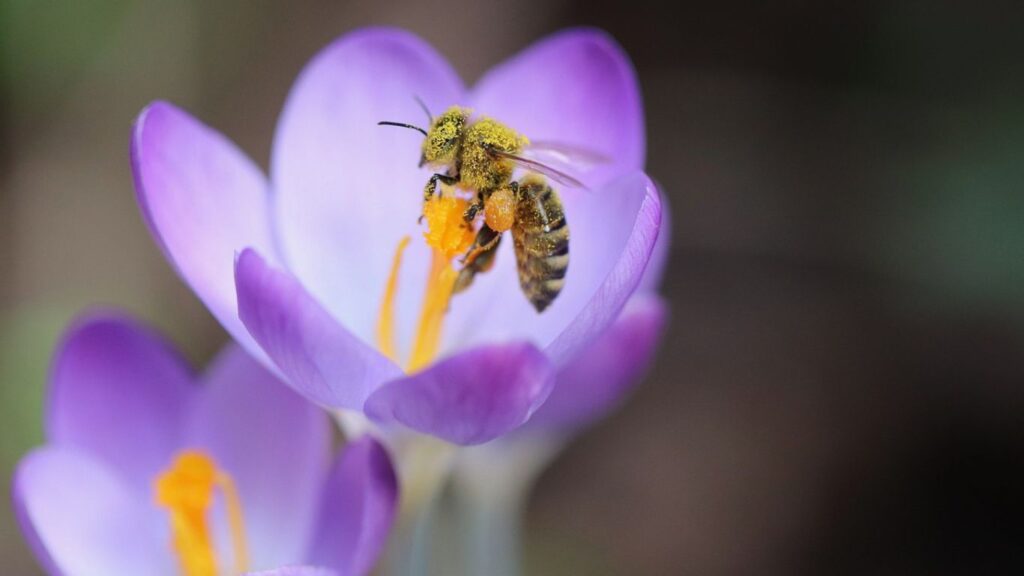
Hello, this is Jo from the Wild Bunch. Something that always helps me through the dark and dull winter months is planning what I will do in my garden when spring arrives. While my garden slowly goes to sleep, and I do the most necessary pruning in October and November, I also plant spring bulbs. Once the 100 or so bulbs are in the ground by the end of November, my winter blues magically go away as I know there is a sudden burst of colour to look forward to. The arrival of spring feels closer with each new shoot of snowdrops and crocuses popping out of the ground. Planting spring bulbs simply never fails to cheer me up. You should try it too. It’s not too late to plant them, but you need to be quick!
Spring flowers such as snowdrops, hyacinths, grape hyacinths, crocuses and fritillaries provide early food sources for bees when there isn’t much around, making them essential to a wildlife-friendly garden. Bulbs can be planted straight in the ground or in containers, and most will multiply and come back every year.
Some bees emerge as early as February. For the best display and to ensure there is a continuous food supply for pollinators, combine the earliest flowering bulbs such as snowdrops with some later flowering ones such as alliums which will provide nectar throughout the summer. By combining bulbs, you’ll not only create eye catching displays but attract different pollinators, too.
My go-to bulbs that support pollinators are snowdrops, grape hyacinths, crocuses, snake’s head fritillary, native bluebells and winter aconite. I plant a variety of daffodils and tulips too as I simply enjoy them. The most popular daffodils that pollinators love are Narcissus poeticus and Narcissus jonquilla. However, it’s worth knowing the hybridised versions lack the pollen fragrance or nectar pollinators are looking for, so it’s important to choose the right kind. The best types of tulips for attracting bees are single petal, violet shades. Bees are able to see the ultraviolet rays these petals produce when reflected in the sun.
Spring bulbs can be purchased from garden centres, some supermarkets, discount stores and online. Bulbs are some of the easiest garden plants to grow, needing only a well-drained soil and some sunshine. As a general rule, plant bulbs two to three times their own depth and around two bulb widths apart. Bulbs are cheap so I tend to get a bit overexcited and often buy 100-200 of different variety. To ensure that planting of such number doesn’t become an overwhelming task I plant a few each when I have some spare time throughout October and November. Then I patiently wait until it all pays off in spring.
Our next gathering – Gardeners Question Time is on 5th December, 1.30pm to 3pm at the Town Hall. Join us for this Christmas edition, ask us wildlife friendly gardening themed questions, share your own tips and a mince pie. Book your free space at https://bit.ly/wild-bunch-december.

